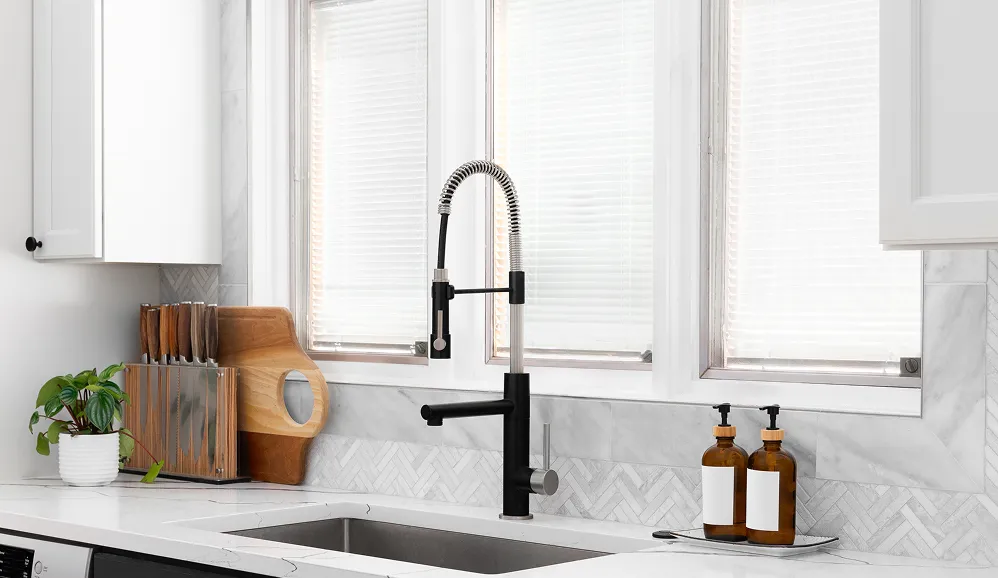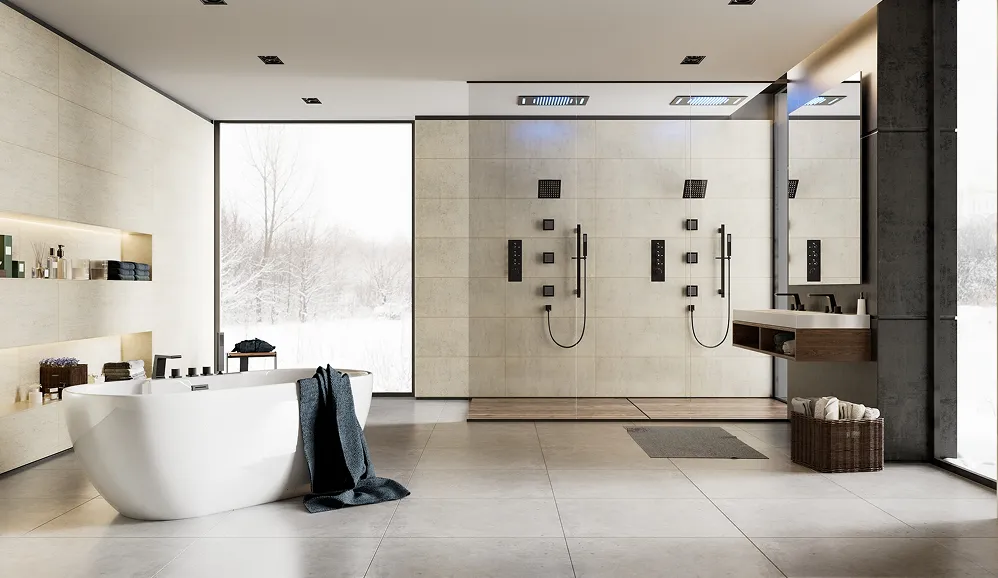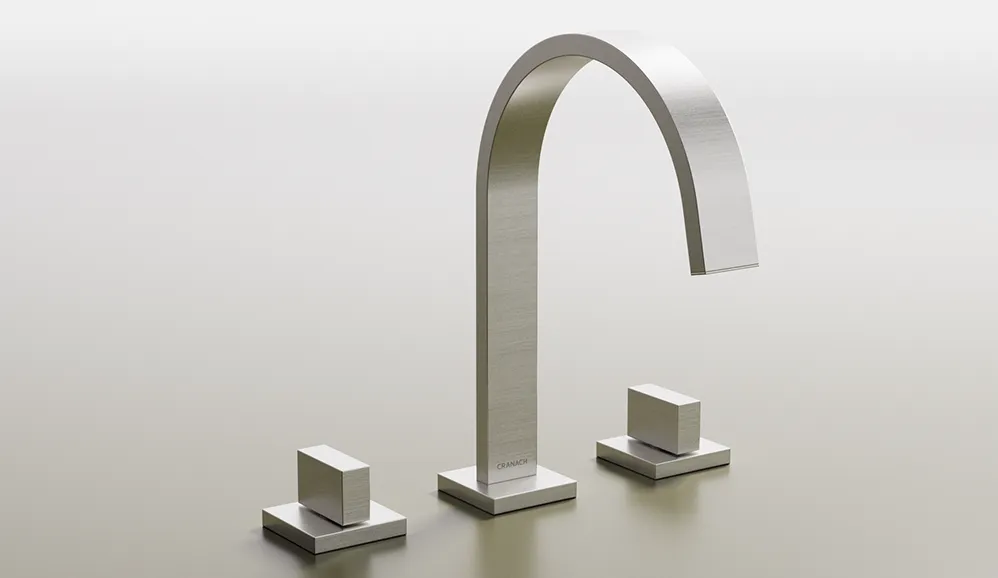To really get a handle on avoiding mold in the shower, you first have to understand why it loves it there so much. It’s not just you. Your shower is basically a five-star resort for mold, offering everything it needs to thrive: constant moisture, plenty of warmth, and a never-ending buffet of soap scum and skin cells.
This combination creates the perfect storm for a biological takeover.
Why Your Shower Is a Perfect Home for Mold
It’s a cycle we all know too well. You spend your weekend scrubbing the grout and re-caulking the corners, only to see those ugly dark spots creep back in a matter of weeks. Trust me, it’s not because you’re a bad housekeeper. You’re just fighting a battle against a stubborn organism that is perfectly designed for that exact environment.
Every time you crank up the hot water for a relaxing shower, you’re unwittingly rolling out the welcome mat for mold. The steam that fogs up the mirror? It’s also coating every single surface with the moisture mold spores need to wake up and start a colony. Your warm, steamy bathroom essentially mimics a damp forest floor—mold’s natural happy place.
The Unseen Buffet for Mold
Moisture is only part of the equation. Your shower also serves up a surprisingly delicious meal for mold. The main courses on the menu include:
- Soap Scum: That film left behind by your bar soap or body wash is loaded with organic goodies mold loves to eat.
- Body Oils and Skin Cells: We all shed naturally, and this buildup provides a steady food source.
- Shampoo and Conditioner Residue: Many of these products contain organic compounds that are basically dessert for mold.
This isn’t some rare problem, either; it’s happening everywhere. Indoor mold is a huge issue, popping up in up to 47% of homes in the U.S. and plaguing 10-50% of houses around the world, even brand-new ones. Because of that constant dampness, showers are always going to be a prime hotspot. You can dig into the global housing and moisture studies to see just how widespread this is.
The real game-changer isn’t just cleaning what you can see; it’s about wrecking the very environment that lets mold flourish in the first place. Once you see your shower as a complete ecosystem, your focus shifts from just reacting to proactively preventing.
When you start thinking this way, you can finally move from endless scrubbing to smart, strategic moves that make your shower a terrible place for mold to call home. That proactive mindset is how you win this fight for good.
Mastering Airflow and Daily Moisture Control
Honestly, the most powerful strategy for keeping mold out of your shower has almost nothing to do with scrubbing. It’s all about the air and moisture you leave behind after you’re done.
If you want to create an environment where mold simply can’t get a foothold, you need to think beyond just cleaning. It starts the moment you turn off the water, with a few simple habits that actively dry out the space.
Your Post-Shower Takedown
Your bathroom’s exhaust fan is your number one ally in this fight. Most of us run it during the shower, but its real power comes from letting it run for at least 30 minutes after you step out. This one simple move pulls all that heavy, humid air out of the room, stopping condensation from settling on your walls, grout, and fixtures. If you’re dealing with a really stubborn moisture problem, cracking the bathroom door open a bit helps, too.
Next up is the preemptive strike. As soon as you’re done, grab a squeegee or a dedicated microfiber cloth and give the shower a quick wipe-down. We’re talking glass doors, tile walls, and even the shower floor. This two-minute habit removes over 90% of the surface moisture that mold spores need to sprout. It does far more to prevent mold than an hour of scrubbing later on.

The image above really drives the point home—standing water on grout lines and surfaces is the primary catalyst for mold colonization. You have to get rid of it.
According to the U.S. Environmental Protection Agency (EPA), keeping your indoor humidity between 30% and 50% is the sweet spot. Mold just doesn’t thrive in those conditions. Running your fan and drying surfaces is the easiest way to make sure your bathroom stays in this safe zone. For a deeper dive, check out the EPA’s guide to a mold-free home.
Building a routine is the key to making this all feel effortless. Here’s a quick checklist to help you get started.
Your Daily vs Weekly Mold Prevention Checklist
This isn’t about adding a ton of chores to your list. It’s about building a simple, effective routine that keeps mold from ever getting a foothold in your shower.
| Action | Frequency | Why It Matters |
|---|---|---|
| Run Exhaust Fan | Daily (after every shower) | Pulls humid air out, preventing condensation. |
| Squeegee/Wipe Down | Daily (after every shower) | Removes over 90% of surface moisture mold needs. |
| Keep Shower Door/Curtain Open | Daily (after every shower) | Promotes airflow and helps the interior dry faster. |
| Weekly Deep Clean | Weekly | Removes any soap scum or grime that can feed mold. |
| Check for Leaks | Monthly | Catches small drips before they create a constant moisture source. |
Stick with this for a couple of weeks, and it’ll become second nature. You’ll be stopping mold before it even has a chance to think about starting.
Pro Tip: A slow, constant drip from a leaky faucet can single-handedly sabotage all your hard work. It provides a never-ending moisture source for mold. If you spot a drip that won’t quit, it’s critical to get it fixed right away. Our guide on how to fix a leaky shower faucet can walk you through the steps.
Your Weekly Cleaning Routine for a Mold-Free Shower
While those quick daily habits are your first line of defense, a dedicated weekly clean is where you really win the war against mold. This is your chance to get ahead of the game, scrubbing away the soap scum and grime that mold considers a five-star meal. Get this right, and you’ll stop a colony before it even thinks about starting.
Honestly, one of the most powerful tools in my cleaning arsenal is a simple spray bottle filled with equal parts white vinegar and water. That’s it. The natural acidity in vinegar is a beast against stubborn soap scum and it kills mold spores on contact. If you’re trying to figure out the right rhythm for your home, it helps to start by understanding cleaning frequency to build a consistent schedule.
Target the Hidden Hotspots
Mold is sneaky. It thrives in those damp, dark, out-of-the-way spots that are easy to miss. Your weekly mission should be to hunt down these problem areas where moisture and gunk love to collect.
- Grout Lines: This is ground zero for mold. Hit the grout directly with your vinegar solution and let it sit for about 10 minutes before you start scrubbing. A stiff-bristled grout brush is non-negotiable here—it gets into those porous lines in a way a regular sponge just can’t.
- Shower Heads: Don’t forget to look up! Mineral deposits and biofilm can clog your shower head, creating a perfect little hideout for mold. We’ve got a full guide on how to clean your shower head with vinegar to keep it flowing freely and cleanly.
- Shower Curtain and Liner: This is probably the most overlooked mold magnet in the entire bathroom. Most fabric curtains and liners can go right into the washing machine. Just toss them in on a gentle cycle with a couple of towels, which act as scrubbers to get them extra clean.
Making this weekly routine easier often comes down to the fixtures you choose. The sleek, modern shower systems with Farne collection from CRANACH, for example, are designed with minimal crevices and super smooth surfaces.
It’s just smart design—fewer places for mold to hide means less time you have to spend cleaning.
By making these targeted steps a regular part of your weekly plan, you shift from constantly reacting to grime to proactively keeping your shower pristine.
Choosing Mold-Resistant Materials and Fixtures
While your daily habits and weekly cleaning routines are your first line of defense, the best long-term strategy is to design mold out of the equation from the very beginning. The materials you choose during a renovation—or even a simple fixture upgrade—can make a bigger difference than any cleaning product on the shelf. The goal is pretty straightforward: create a shower where water has absolutely nowhere to hide.
Let’s be honest, traditional tiled showers can be a real headache. While they look great on day one, that porous grout is like a sponge. It soaks up moisture and gives mold the perfect textured surface to dig its roots into. If you want a low-maintenance, mold-resistant shower, minimizing or completely getting rid of grout lines is the most effective move you can make.
Smart Surfaces and Fixtures
This is where upgrading your materials really pays off. Think about switching to surfaces that are inherently non-porous and seamless. Large-format tiles are a good start since they dramatically cut down on the amount of grout you have to deal with. But if you really want to win the war, solid-surface panels or acrylic surrounds eliminate grout entirely. These materials create a smooth, continuous surface that water just sheets right off of, leaving mold with no foothold.
I’ve heard countless homeowners say they regret choosing small, intricate tiles for their shower. It’s always the same story: an endless battle with scrubbing grout. As one renovator put it, “Big tiles in the shower a better way to go. Reduce the grout.”
This same design philosophy should extend to your fixtures. Sleek, modern designs don’t just look clean; they’re engineered to be easier to keep clean. Brands like CRANACH, for example, really focus on creating fixtures that blend beautiful form with practical function for a healthier bathroom.
Take a look at the design of CRANACH‘s shower systems with Farne collection.
See those smooth surfaces and minimal crevices? That’s intentional. The design is meant to prevent water from pooling and stop soap scum from building up in the first place. A well-designed system like this one gets rid of potential mold hotspots, which makes your weekly cleaning routine much faster and more effective.
It’s a proactive approach that stops mold before it even has a chance to start. Of course, what’s inside matters just as much; the internal mechanics are critical. You can learn more about how plumbing components play a role in our guide on the types of bathroom faucet valves. By choosing smarter materials and fixtures from the get-go, you’re building a foundation for a permanently cleaner, healthier shower.
Common Habits That Secretly Encourage Mold Growth
Even if you’re diligent about cleaning, you might be accidentally rolling out the welcome mat for mold. It’s true. Many of our daily bathroom habits seem harmless, but they create the exact damp, stagnant conditions that mold loves. Kicking just a few of these habits can make a massive difference in keeping your shower mold-free.
One of the worst offenders? Leaving damp towels or bathmats bunched up on the floor. It’s an easy thing to do when you’re in a hurry, but that crumpled, wet fabric is a nightmare. It traps moisture against the floor, cuts off all air circulation, and basically turns into a mold incubator. This is especially bad if you have porous tile grout, where moisture can seep in and hang around for hours.
This isn’t a rare problem, either. An estimated 70% of homes in the United States have some mold lurking somewhere. Since mold can start growing within just 24 to 48 hours of a surface getting wet, prevention is everything.
Simple Swaps for a Drier Shower
Another common mistake I see all the time is leaving shampoo and body wash bottles sitting directly on the shower floor or crammed onto a built-in corner shelf. Water always pools underneath them, creating a dark, damp spot that literally never has a chance to dry out.
The fix is surprisingly simple: switch to a hanging shower caddy. This keeps your products off the floor and allows water to drain away completely. Air can finally circulate around the bottles, which gets rid of those hidden moisture traps for good.
That tiny, slow drip from your shower head is another sneaky saboteur. It might not seem like a big deal, but that constant dripping provides a persistent source of moisture, keeping the area perpetually damp. A leaky fixture, especially one with weak flow, can also signal a bigger problem. Our guide on how to increase water pressure in your shower has some great troubleshooting tips.
By catching and correcting these seemingly minor habits, you’re actively disrupting mold’s ability to get a foothold in the first place.
For a shower that’s designed to resist mold from the start, explore the CRANACH shower systems with Farne collection. Their sleek, modern designs feature smooth surfaces and minimal crevices, making them incredibly easy to keep clean and dry. Discover the Farne Collection today!










